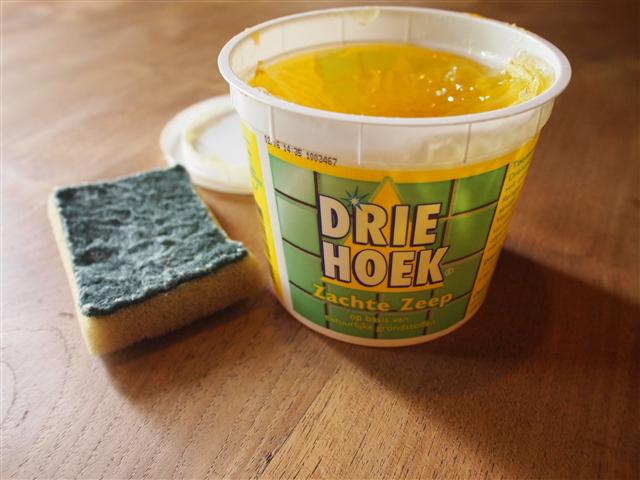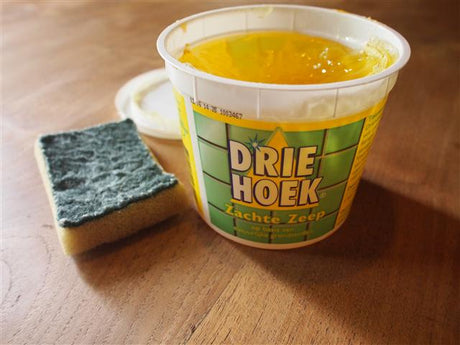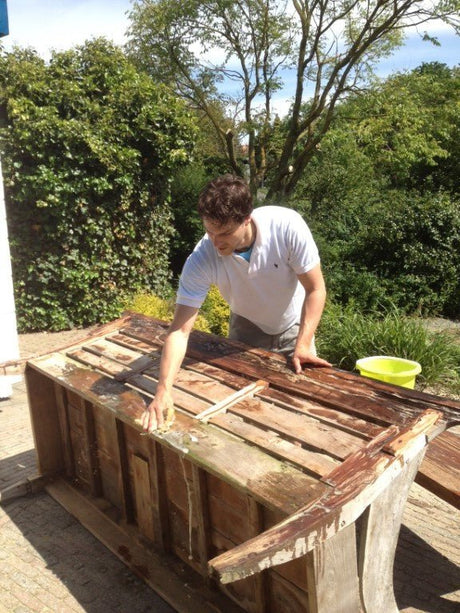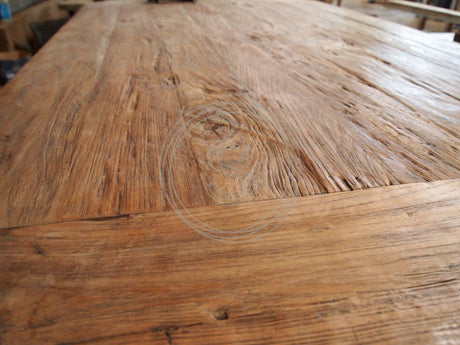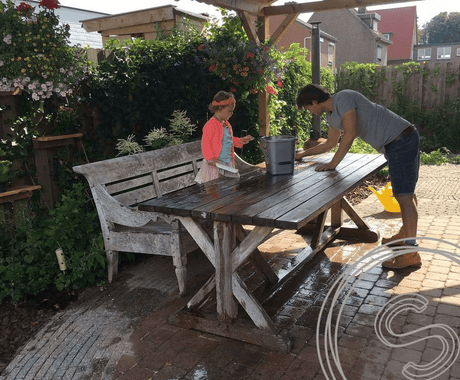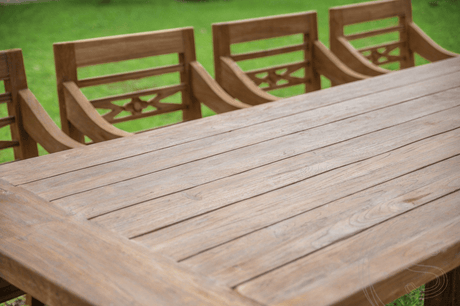Teak is a tropical hardwood characterized by its exceptionally low-maintenance properties. In Southeast Asia, the wood has been used for centuries to build boats, wooden huts, and furniture. The necessary protection and maintenance are relatively straightforward. This, along with its authentic appearance, is another reason why solid teak furniture is becoming increasingly popular in this country.
Maintaining teak furniture: naturalness is key
It has a natural appeal and a rustic appearance. This noble hardwood has a high natural oil content, making it resistant to pests and environmental influences. The relatively high oil content not only gives the wood a silky sheen but also prevents liquids from penetrating deeply into the surface, minimizing staining. This characteristic distinguishes teak from native tree species like oak or beech, where the lower density allows liquids to penetrate much deeper into the wood.
A characteristic feature of teak is its light color. Surface stains and discoloration can be easily removed with lukewarm water and a small amount of mild soap. The mild soap helps seal the wood surface and prevents further staining. If, contrary to expectations, ridges appear after using the cleaning agents, sand the affected area with fine sandpaper.
Treat the wooden surface with Teakfix
The best possible protection for your teak furniture is provided by special maintenance products. Teakfix is a colorless, water-based preservative. It seals the wood surface for a certain period and prevents the light surface from darkening permanently. However, even with the use of high-quality maintenance products, darkening cannot be completely prevented. The laws of physics that govern every type of wood apply.
Special oil for surface sealing
Another option for treating teak is with a special oil. This oil penetrates the pores of the natural material and seals the surface with an invisible protective layer. After treatment, a damp cloth is sufficient to completely remove spilled liquids or dirt. Only after a long exposure time (24 hours or longer) can strongly colored liquids such as red wine cause stains. In rare cases, the liquid can penetrate the oil's protective layer and cause an unsightly appearance. To remove the stain, the affected area is roughened with sandpaper and then treated again with the special oil. In some cases, color variations on the wood surface may occur after this treatment.
Checking indoor humidity
Teak is a natural material that shrinks when dry and expands in damp weather. Especially in winter, there are significant temperature differences between indoors and outdoors. Dry air from heating and low humidity take their toll on the hardwood. Therefore, it's essential to follow a few simple rules to prevent cracks from developing in the surface of your teak furniture.
- Maintain a constant humidity of 55 to 65 percent and regulate this by placing humidifiers or water containers.
- Do not place teak furniture near heat sources such as radiators or fireplaces.
- Please note that underfloor heating can accelerate the drying out of the natural material.
- Make sure that indoor furniture is not in direct sunlight and keep a sufficient distance from fans and air conditioners.
